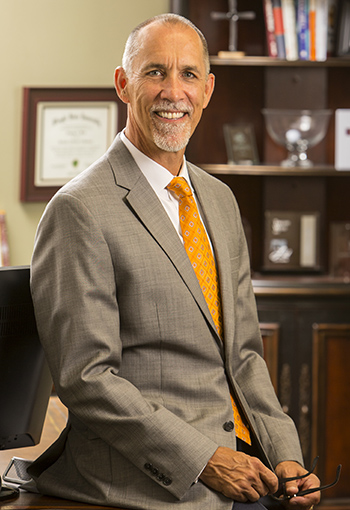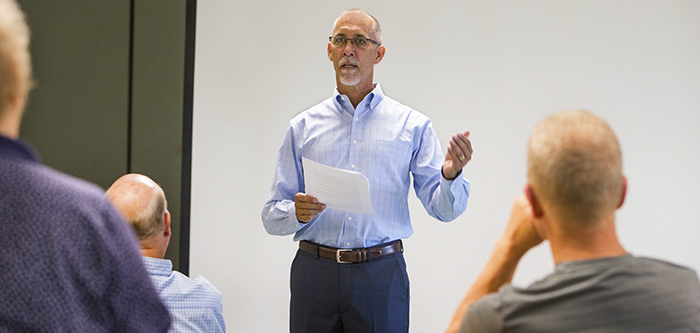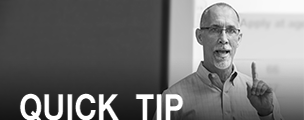Retirement planning matters
Retirement planning matters

Tim Wells, AIF • Cincinnati, OH
Retirement Matters • Sigma Financial Corporation
Read full biography below
Proactive Advisor Magazine: Tim, talk about the evolution of your investment philosophy.
When I first entered the financial-services industry, I worked with a well-known national firm and am grateful for that opportunity and the training I received. The prevailing investment philosophy at the time was, and is still today, what I call “pie-chart investing,” or what the theorists call modern portfolio theory. This essentially involves dividing up a client’s investment portfolio between various types of equity and bond classes or sectors, with the allocations dependent chiefly on the client’s age or when a client needs access to the capital. Relatively older clients would have more of an allocation in fixed-income investments and less in stock. The percentage of fixed income would increase as they became older.
 Of course, there was much more to it than that, but the basic philosophy resulted in investment portfolios that were fundamentally passive. Whether markets were in very good shape or heading toward a disaster, the client’s pie chart never changed, except for periodic rebalancing. This approach may work well in a long-term bull market like the one that ended at the turn of the last century, but one must ask if this approach is best for clients, or if there might be another solution to consider, like tactical investment management.
Of course, there was much more to it than that, but the basic philosophy resulted in investment portfolios that were fundamentally passive. Whether markets were in very good shape or heading toward a disaster, the client’s pie chart never changed, except for periodic rebalancing. This approach may work well in a long-term bull market like the one that ended at the turn of the last century, but one must ask if this approach is best for clients, or if there might be another solution to consider, like tactical investment management.
One of my mentors in the business was fond of saying, “If what you always thought to be true turned out not to be true, when would you want to know about it?” Of course, the answer is as soon as possible! In the case of my investment philosophy shifting, it was more of a process than a single event. I remember some challenging periods relatively early in my career when clients would ask why they were remaining fully invested when the markets were obviously in bad shape. We were taught to tell them to “hang in there,” but we always wondered if there was another answer to this problem.
Philosophically, that question and its answer have been at the core of my thinking for many years. We obviously cannot eliminate all risk from investing, but we can, as advisors, look for alternatives. It is clear to me from my work with clients of all types over the years that most take on too much risk and are usually not even aware of how risky their portfolios are—until it is too late. When the market’s bad, we should have less money in the market—that’s what active investment management is all about at its core. Education on the issue of investment risk management has become a cornerstone of my practice.
How does your planning process work?
Most people working on their own to address their family’s financial issues attack them on a singular, ad hoc basis. Our firm uses a holistic planning process that aims to tie together all of a client’s financial-planning issues so they can be approached in a coordinated fashion. This starts with developing a consultative relationship that explores a client’s or client couple’s values, beliefs, and life goals. It goes from there to develop customized planning recommendations that can help achieve progress toward those goals and objectives. The last piece is making sure that the various elements of a plan are working together. If the client has other trusted advisors, such as a CPA or attorney, their efforts need to be coordinated and working toward the same objectives.
I have developed a formalized process that I share with clients as we begin working together. We want to make sure that we are helping clients coordinate everything related to their financial health, including investments, insurance planning, beneficiaries’ titling, wills and trusts, tax management strategies, legacy planning, Social Security claiming strategies, Medicare, retirement-income planning, and so forth. Our firm will do the work directly, recommend an experienced and capable third party, or coordinate with a client’s current advisors. We will use whatever approach best fits the client’s needs and desires. We believe comprehensive financial planning is extremely important, and what we call our True Wealth 360 Holistic Planning System is one of the differentiating factors of our firm.
What is your approach to retirement-income planning?
Retirees discover an interesting thing when they stop working—the company that they worked for all those years will stop sending them paychecks! The money that they have is all they’re ever going to have. If they lose half of that money, they can’t go back to work for another 30 years and make that back. That is why it is so important for retirees to try to avoid significant asset losses. I like to say, “Rate of return is the wrong concern.” Getting the best or highest rate of return is not the proper goal for retirees, in my opinion. What is important is managing drawdown risk and maximum loss potential—and then focusing on achieving a rate of return that will adequately supplement other income sources for a desired lifestyle in retirement.
Because what we need more than anything else is for our clients to be able to stick with the plan. If a client’s comfort level for a maximum loss is 6%, and their portfolio loses 12%, they are going to react emotionally and not stick with the plan. Then they will likely miss whatever potential recovery comes about. So, we need to match potential maximum losses with a client’s risk profile and comfort level.
“We obviously cannot eliminate all risk from investing, but we can, as advisors, look for alternatives.”
The other thing that we do is segment investment dollars according to their time frame. I have found that few people have this step in their plan, and that is where I think our planning system has an advantage. Everybody has money in the bank for now, and everybody has money in investments for later, but people often overlook the investment funds they need in the mid-term period. Those monies may need to be invested very differently than short- or long-term dollars.
After putting a sufficient amount in emergency funds, we carve out a 10-year time frame. Then we ask what investments or money will need to be taken out of a client’s investments in the next 10 years. Do they need money for income? Do they need money for planned expenses? Do they have to take minimum distributions? If there is money needed in the next 10 years, we may invest it differently than we do money in the later bucket. We have effectively added another layer of protection by identifying that 10-year window. If there are losses in the long-term investments, we know the client will not have to touch that money for at least 10 years.
The combination of this approach and active investment management may help to reduce potential losses and, we believe, puts clients in a better position. We might combine our investment strategies with annuities with principal and income guarantees because we think that can present a good approach to achieving the objectives of risk management, income, and potential asset growth. I believe that it is important to have more than one active management strategy, and we tend to use multiple strategies that can be combined in a portfolio. If one strategy is out of favor, the other ones may be working well at that time. We have access to up to a 100 different tactical or active strategies that we can tap into. We build our portfolios, especially for the mid-term period, based on diversification among those different strategies. Diversification in this way does not guarantee against a loss or ensure a profit, but it is a method we use to manage risk.

How would you like clients to describe the benefits of working with you and your firm to a friend or associate?
First, I would like them to feel they have had an experience that has made a significant positive impact on their financial lives, and, in fact, their lives overall. Retirement can be an intimidating prospect for many people, and we are there to help provide the guidance, education, and support they need. Second, I would like them to have an appreciation for our holistic approach to financial planning, one that can cover the full range of financial needs a client may have.
Third, I think it is important to communicate that we have excellent third-party resources, especially in the investment management area. Our managers are knowledgeable and have years of experience, and there is a wide breadth of strategic and tactical options that we can offer clients. Lastly, I am hopeful my clients would say that they have had a highly personalized and enjoyable experience with our firm, where their values and goals were treated with respect and understanding. I would be very gratified if clients expressed their trust in us in this fashion.

The importance of holistic financial planning for retirees
Retirement can be an intimidating prospect for many people, and the closer they get to their target date, the more concerned they are about the complexities of retirement planning. Tim Wells’ firm aims to address the many financial issues these clients face by employing a process called the True Wealth 360 Holistic Planning System. The advisor starts this process by developing a consultative relationship that explores a client’s values, beliefs, and life goals and addresses the following categories:
- Foundation and estate planning.
- Income and investment planning.
- Insurance and legacy planning.
 Tim Wells is a private wealth manager and the CEO of Retirement Matters, based in Cincinnati, Ohio. Mr. Wells has been in the financial industry for more than two decades and has “provided financial and investment planning for hundreds of families.” He says his overriding goal is to “bring more financial stability into clients’ lives through comprehensive and personalized guidance.”
Tim Wells is a private wealth manager and the CEO of Retirement Matters, based in Cincinnati, Ohio. Mr. Wells has been in the financial industry for more than two decades and has “provided financial and investment planning for hundreds of families.” He says his overriding goal is to “bring more financial stability into clients’ lives through comprehensive and personalized guidance.”
A graduate of Wright State University with a degree in marketing and communications, Mr. Wells was a member of the university’s competitive debate and public-speaking team. Following college, he started a successful small-business venture before being recruited into the financial-services industry and trained with a prominent national firm. He later worked in partnership with several advisors for a decade before founding his own firm in 2006.
Mr. Wells is well-known in the Cincinnati area for his many speaking engagements, seminars at universities, churches, and businesses, and for being the former host of a local radio program called “Retirement Matters.” Mr. Wells also earned the Accredited Investment Fiduciary (AIF) designation from the Center for Fiduciary Studies.
Mr. Wells plays the guitar and enjoys playing worship music with his wife, Deb, who is a well-known worship leader in their area. They have four children and two grandchildren. Mr. Wells has served on the pastor’s council at his family’s church and on the board of directors of a crisis pregnancy center. He enjoys golf and has played competitive softball for many years.
Disclosure: Securities offered through Sigma Financial Corporation. Member FINRA and SIPC. Retirement Matters is independent of Sigma Financial Corporation. Retirement Matters: 11427 Reed Hartman Hwy., Cincinnati, OH 45241. www.retirementmatters.com.
Photography by Chris Cone

